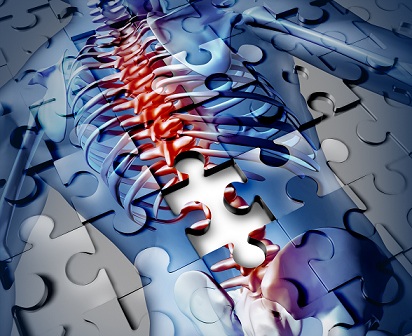New surgical breakthrough in repairing damaged spinal discs

date: 17/02/2014
Project: Novel biofunctional high porous polymer ...
acronym: DISC REGENERATION
See also: CORDIS
Contact: http://www.cnr.it/sitocnr/Englishve...
In response, researchers in the DISC REGENERATION project have developed a solution for those with damaged spinal discs, the predominant cause of severe and lasting back pain. They have developed a new surgical approach and the necessary materials that enable surgeons to repair damaged intervertebral discs.
The team used modelling to determine the complexity of the stresses placed on the human vertebral disc and then calculated the bio-active repair capability needed for any replacement. Following this work, they developed suitable materials for both the hard outer element of the disc (the annulus) and the soft, gel-like inner core (the nucleus). They then worked out how to inject both types of material with the minimum of invasive surgery, and how to seal the disk afterwards.
Specialised treatment
Back pain from spinal-disc problems has to be treated in different ways. Younger people with sports-derived injuries may be able to recover to some extent via the body's own natural healing process. But when the problem is due to disc degeneration, as is common in older people, the repair process has to be helped.
Which is why the team developed two different types of injectable gels for the soft inner core, the nucleus, of the spinal disc. While both are bio-hybrid structures that closely resemble the human tissue in its essential attributes, there are differences.
The first gel type, designed for use with patients up to the ages of 40 to 50, is loaded with live human cells, and is suited to those vertebral disks that still have the ability to self-repair to some extent.
The second gel type has no live cells, and instead is made of gellan gum and esters of hyaluronic acid components. This second type is designed for patients over 50, whose spinal cells are less able to repair and regenerate themselves. The gell also includes a growth component to help regenerate the disc nucleus.
Cooperation and expertise
Project coordinator Professor Luigi Ambrosio of Italy's National Research Council (CNR) is proud of the team's success in reaching project targets.
“There is no one single achievement I would emphasise,” he says, “but it is the integration of all the different expertise and techniques that went so well … the image analysis, the materials technology, the cellular structures, the bio-active compounds, the surgery, the injection method and a custom approach for partial and total disc replacements. What we have achieved is a real step forward in treating spinal-disc problems.”
The concepts, materials and surgical practices developed by the DISC REGENERATION project are still relatively new developments in medicine. “Spine-motion preservation” is an emerging technology, and the next step will be to undertake a full-scale clinical trial.
If the techniques developed within the project prove successful with living patients, then they could not only relieve back pain for many, but also become one of the strongest market opportunities in the European medical-technology industry.
